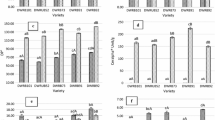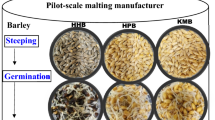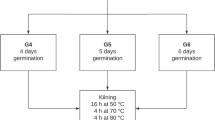Digitaria exilis
) were investigated for their malting characteristics. Five of the eight varieties investigated showed good malting properties. Of the five varieties assayed for enzyme activities, three (Nock-2, KN-3 and Chori-1) had a preponderance of β-amylase as the major starch-degrading enzyme, which is similar to the enzyme profile in barley. Water and 2% aqueous peptone enzyme extracts showed that fonio malt (D. exilis) contained insoluble amylases. Amylase had an optimum pH of 4.6 in all the samples investigated. KN-3 had the highest malting loss in the range 31.6–41.7% (w/w) while Chori-1 had the lowest malting loss in the range 5.7–25.9% between day 4 and day 6 of germination. Chori-1 had the best malting characteristics and brewing potential with amylolytic activity of 39.19 ±0.13° IOB on day 4 of germination. The optimum mashing temperature was in the range 50–55°C.
Similar content being viewed by others
Author information
Authors and Affiliations
Additional information
Received: 6 August 1999 / Revised version: 30 September 1999
Rights and permissions
About this article
Cite this article
Nzelibe, H., Obaleye, S. & Chidozie Onyenekwe, P. Malting characteristics of different varieties of fonio millet (Digitaria exilis). Eur Food Res Technol 211, 126–129 (2000). https://doi.org/10.1007/s002179900125
Issue Date:
DOI: https://doi.org/10.1007/s002179900125




